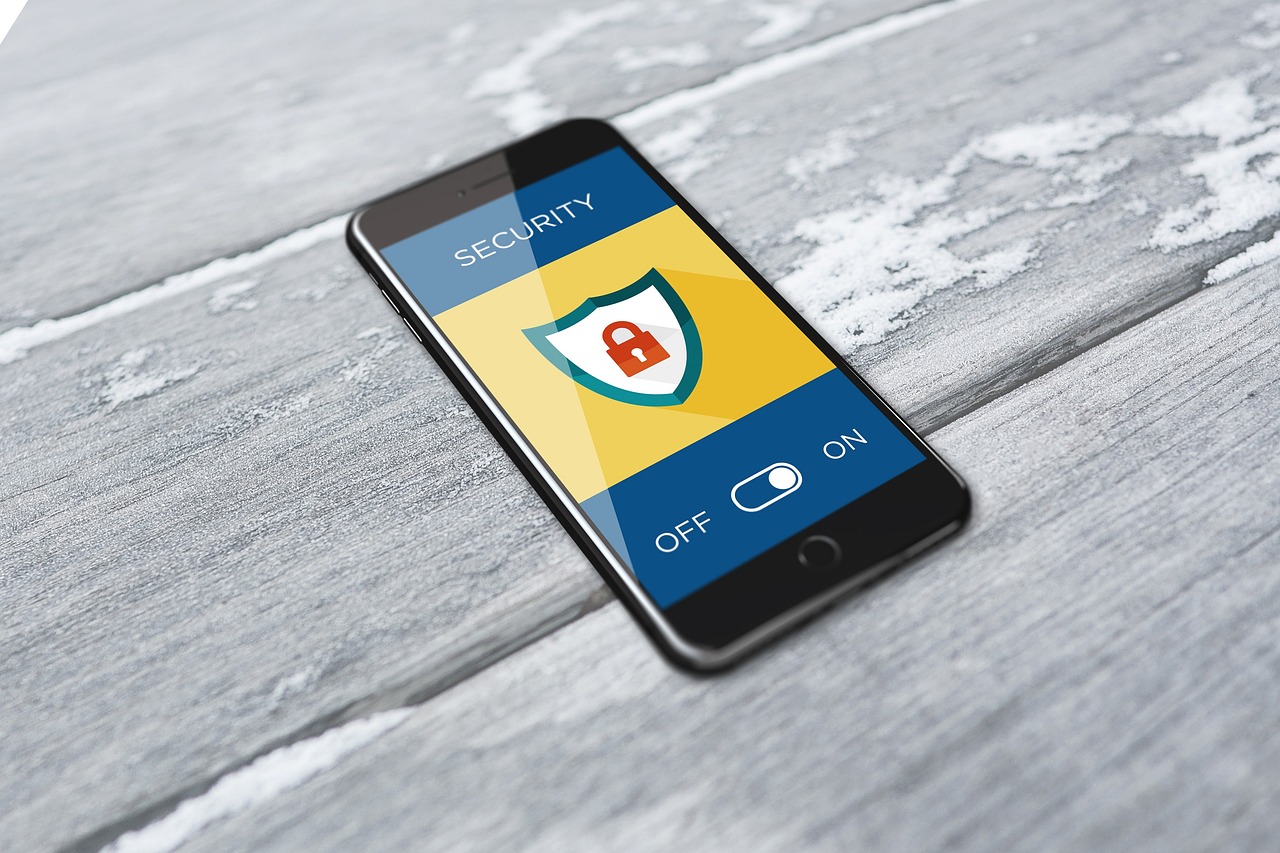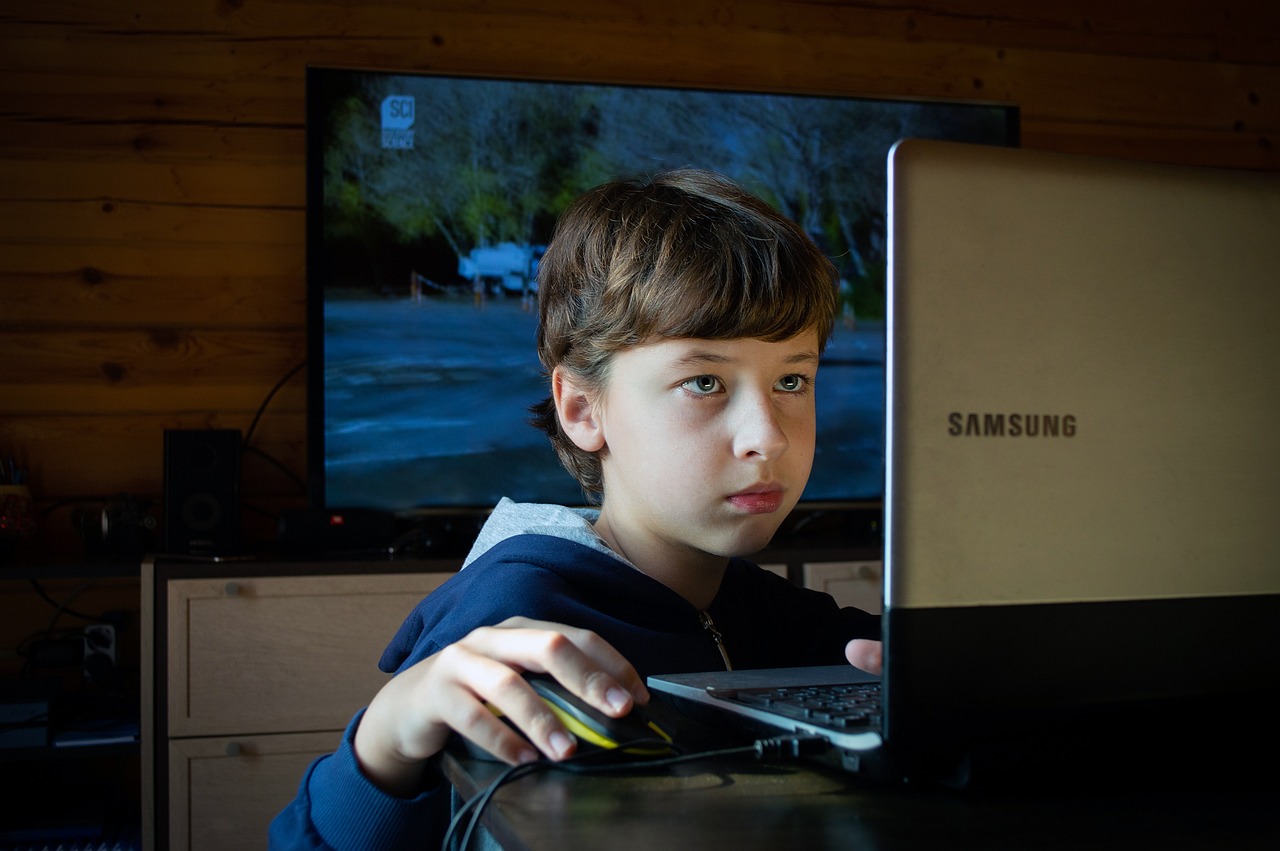How to Ensure Kids’ Online Safety
In today’s digital age, ensuring our kids' online safety is more crucial than ever. With the internet being an integral part of their lives, from homework to socializing, it’s essential for parents to take a proactive approach. But how do we navigate this complex landscape? The key lies in understanding the potential risks and implementing effective strategies to safeguard our children. Just like a sturdy fence protects a garden from intruders, a well-thought-out plan can create a safe online environment for our kids.
Imagine your child exploring a vast, exciting playground filled with friends and fun activities. However, lurking in the shadows are potential dangers like cyberbullying, inappropriate content, and online predators. As parents, it’s our responsibility to ensure that they can enjoy this playground safely. This article will dive into essential strategies and tips that can help protect your children as they navigate the online world, ensuring a safer digital experience for young users.
Before we can protect our children, we must first understand the various dangers they may encounter online. Cyberbullying can manifest in many forms, from hurtful messages to social media shaming, and it can have devastating effects on a child's mental health. Inappropriate content is another concern, as children might stumble upon videos, images, or websites that are not suitable for their age. And let’s not forget about online predators, who often disguise themselves to gain the trust of unsuspecting children.
Recognizing these risks is the first step in implementing proactive measures. As parents, we need to have open discussions with our children about what they might face online. It’s not enough to simply tell them to be careful; we must equip them with the knowledge and tools to navigate these dangers effectively.
One of the most effective ways to enhance online safety is by implementing parental control tools on devices. These tools act as a safety net, allowing parents to monitor their children's online activities and restrict access to inappropriate content. There are various types of parental controls available, ranging from built-in device settings to specialized software. Understanding how to use these tools effectively can significantly increase your child's online safety.
With a wide range of parental control software on the market, selecting the most suitable option for your family can feel overwhelming. Consider your family’s unique needs and your children's ages when making this choice. For younger children, simpler software with basic features might suffice, while older kids may require more comprehensive tools that allow for greater flexibility and control.
When choosing parental control software, it’s important to look for key features that will cater to your family's specific needs. Here are some essential features to consider:
- Web Filtering: Blocks access to inappropriate websites.
- Usage Tracking: Monitors how much time your child spends online.
- Time Management: Sets limits on screen time to encourage a healthy balance.
Once you’ve chosen the right software, the next step is installation and setup. Follow these general steps to ensure maximum protection:
- Download the software from a trusted source.
- Install it on all devices your child uses.
- Configure the settings according to your family’s needs.
- Regularly review and adjust the settings as necessary.
While technology can provide a layer of safety, nothing beats open communication. Encouraging an open dialogue about online activities is crucial. Talk to your kids about internet safety, share your concerns, and set boundaries together. This not only helps them feel comfortable approaching you with any issues but also empowers them to make safe choices online.
Education is a powerful tool in ensuring online safety. Teaching children about the potential dangers of the internet empowers them to make informed decisions. Discussing topics like privacy settings, responsible sharing, and recognizing suspicious behavior can significantly enhance their ability to protect themselves.
Help your children identify red flags that may indicate suspicious behavior or content online. Teach them to trust their instincts—if something feels off, it probably is. By fostering this awareness, they can navigate the online world with greater confidence and caution.
As social media becomes increasingly popular, educating kids about privacy settings and responsible sharing is essential. Discuss the importance of keeping personal information private and the potential consequences of oversharing. Encourage them to think twice before posting and to use privacy settings to control who can see their content.
Q: How can I start a conversation about online safety with my child?
A: Start by discussing their favorite online activities and gradually introduce the topic of safety. Use real-life examples to illustrate potential risks and encourage them to share their experiences.
Q: What age should I start using parental controls?
A: It’s never too early to start. Even young children can benefit from basic parental controls, and as they grow, you can adjust the settings to fit their maturity level.
Q: How can I monitor my child's online activity without invading their privacy?
A: Open communication is key. Explain to your child why you want to monitor their activities and involve them in the process. This way, they’ll feel respected and more likely to cooperate.

Understanding Online Risks
In today's digital age, the internet is a vast ocean of information, entertainment, and social interaction. However, just like any ocean, it comes with its own set of dangers, especially for our children. Understanding these online risks is the first step in ensuring their safety. Children may encounter a variety of threats while exploring the web, including cyberbullying, exposure to inappropriate content, and the lurking presence of online predators.
One of the most alarming risks is cyberbullying. Unlike traditional bullying, which often occurs face-to-face, cyberbullying can happen 24/7 and can reach children even in the safety of their homes. Victims may feel trapped, unable to escape the taunts and harassment that follow them online. This can lead to severe emotional distress, anxiety, and even depression. As parents, it's crucial to recognize the signs of cyberbullying and to foster an environment where children feel safe discussing their online experiences.
Another significant risk involves inappropriate content. The internet is filled with material that is not suitable for young eyes, from explicit images to violent videos. Children, driven by curiosity, can stumble upon such content unintentionally. This exposure can have lasting effects on their development and worldview. Therefore, it’s essential to guide them on how to navigate the internet safely and to utilize tools that can help filter out unsuitable material.
Finally, we must address the threat of online predators. These individuals often disguise themselves as friendly peers to gain the trust of unsuspecting children. They may use social media platforms, chat rooms, or gaming sites to initiate contact. Teaching children about the importance of privacy and caution when interacting with strangers online can significantly reduce the risk of encountering such threats.
To summarize, here are some key online risks that every parent should be aware of:
- Cyberbullying: Continuous harassment through digital platforms.
- Inappropriate Content: Exposure to material that is not age-appropriate.
- Online Predators: Individuals who exploit children through deceitful online interactions.
By understanding these risks, parents can be more proactive in their approach to online safety. It’s not just about shielding children from danger, but also about empowering them to navigate the digital world with confidence. Regular conversations about their online experiences and the potential pitfalls can make a significant difference in their safety and well-being.

Setting Up Parental Controls
In today's digital age, ensuring your child's online safety is more important than ever. One of the most effective ways to do this is by on their devices. These tools not only help protect children from inappropriate content but also allow parents to monitor their online activities. Think of parental controls as a safety net, catching your kids before they fall into the deep end of the internet.
When it comes to parental controls, there are several options available, each with its own set of features. From built-in device settings to third-party software, the choices can be overwhelming. However, understanding the types of parental controls and how to implement them effectively can make a world of difference in your child's online experience. Remember, this isn't about creating a digital prison; it's about fostering a safe environment where your children can explore and learn.
With so many parental control software options on the market, how do you choose the right one for your family? Start by considering your child's age and the types of devices they use. For younger children, you might want a tool that focuses heavily on content filtering, whereas older kids may need something that emphasizes monitoring and time management. Here’s a quick comparison of some popular parental control software:
| Software | Age Suitability | Key Features |
|---|---|---|
| Net Nanny | All Ages | Web filtering, time management, alerts |
| Qustodio | All Ages | Activity monitoring, app blocking, location tracking |
| Kaspersky Safe Kids | 5+ | Web filtering, social network monitoring, battery tracker |
| Bark | All Ages | Social media monitoring, alerting for risky content |
As you can see, each software has its unique features that cater to different needs. Take the time to read reviews and perhaps even try out a few options to see what fits best with your family's lifestyle.
When selecting parental control software, there are several key features you should look for to ensure maximum protection:
- Web Filtering: This feature allows you to block inappropriate websites and content, keeping your child safe from harmful material.
- Usage Tracking: Monitoring how much time your child spends online can help you set healthy boundaries.
- Time Management: This feature lets you set limits on how long your child can use their devices, encouraging them to take breaks.
Having these features at your disposal can help you create a more controlled and safer online environment for your children.
Once you've chosen the right parental control software, the next step is installation and setup. While the process may vary depending on the software, here’s a general guide to get you started:
1. Download the software from the official website or app store. 2. Follow the installation prompts. 3. Create an account and set up a password. 4. Configure the settings according to your preferences (web filtering, time limits, etc.). 5. Add your child's devices to the parental control dashboard. 6. Regularly review and adjust settings as necessary.
By taking these steps, you can ensure that your child's online experience is both enjoyable and safe. Remember, parental controls are just one part of the equation; open communication and education about online safety are equally important.

Choosing the Right Software
When it comes to ensuring the online safety of your children, selecting the right parental control software can feel like navigating a maze. With so many options available, it’s crucial to consider your family's specific needs and the ages of your children. Think of it like picking the perfect tool for a job; you wouldn’t use a hammer to screw in a lightbulb, right? Similarly, the right software can make a world of difference in keeping your kids safe online.
First, you should assess the age and maturity level of your children. Younger kids may need more stringent controls, while teenagers might benefit from tools that promote independence but still offer oversight. For instance, consider whether your child is just starting to explore the internet or if they are already diving into social media platforms. This will guide you in choosing software that strikes the right balance between protection and freedom.
Next, look at the features offered by different software options. Not all parental control tools are created equal, so it’s essential to identify what each one provides. Here are some features to consider:
- Web Filtering: This feature allows you to block inappropriate content based on categories like violence, adult content, or gambling.
- Usage Tracking: Understanding how much time your child spends online can help you set healthy limits.
- Time Management: Some software enables you to set specific times when your child can access the internet, promoting a balanced lifestyle.
- Location Tracking: For mobile devices, this feature can help you keep tabs on where your children are when they’re out and about.
Once you have a shortlist of potential software, read user reviews and ratings to get a sense of how effective they are in real-world scenarios. It’s like asking for recommendations before trying a new restaurant; you want to know what others think before making a commitment. Additionally, take advantage of free trials whenever possible. This allows you to test out the software and see if it fits seamlessly into your family's routine.
Finally, consider the customer support offered by the software provider. In the digital age, tech issues can arise at any moment, and having reliable support can save you a lot of headaches. Look for providers that offer 24/7 support and comprehensive resources, such as FAQs, forums, and tutorials. After all, you want a solution that not only protects your children but also makes your life easier.
In conclusion, choosing the right parental control software is not just about picking the most popular option; it’s about finding a tool that aligns with your family’s values and needs. By taking the time to evaluate your choices carefully, you can create a safer online environment for your children, allowing them to explore the digital world with confidence.

Features to Look For
When it comes to ensuring your child's safety online, selecting the right parental control software can feel like searching for a needle in a haystack. With so many options available, how do you know which features are essential? It's crucial to focus on a few key functionalities that will provide comprehensive protection without overwhelming your child or yourself. Here are some important features to consider:
- Web Filtering: This feature allows you to block inappropriate content, ensuring that your child only accesses age-appropriate websites. Look for software that offers customizable filters, so you can tailor them to your child's specific needs.
- Usage Tracking: Monitoring how much time your child spends online and which apps or sites they visit can provide valuable insights into their digital habits. This feature helps you identify any concerning patterns or excessive screen time.
- Time Management: Setting limits on daily screen time can help foster a balanced lifestyle for your child. A good parental control tool should allow you to create schedules, ensuring that your child knows when it's time to unplug.
- Location Tracking: If your child uses mobile devices, having the ability to track their location can provide peace of mind. This feature is especially useful for keeping tabs on older kids who may venture out on their own.
- Social Media Monitoring: With the rise of social media, it's essential to monitor your child's interactions. Look for software that can alert you to any suspicious messages or friend requests, helping you keep your child safe from online predators.
These features not only enhance your child's online safety but also empower you as a parent to engage in meaningful conversations about their digital life. Remember, the goal is to create an environment of trust and openness, where your child feels comfortable discussing their online experiences with you. By selecting software that includes these features, you're taking proactive steps toward safeguarding your child's online journey.
Moreover, while it's vital to have these tools at your disposal, you should also consider the usability of the software. A user-friendly interface can make a world of difference, allowing you to navigate settings and adjustments without a steep learning curve. After all, the last thing you want is to struggle with complicated software while your child is online!
In conclusion, when evaluating parental control software, keep an eye out for these essential features. They will not only help protect your child from online dangers but also provide you with the tools needed to foster a healthy and safe digital environment. Remember, a proactive approach today can lead to a safer online experience for your child tomorrow.
1. What are parental controls?
Parental controls are software tools that help parents manage and monitor their children's online activities. They can block inappropriate content, track usage, and set time limits on devices.
2. How do I know if my child needs parental controls?
If your child uses the internet, especially on their own, it's wise to implement parental controls. They can help protect your child from potential online dangers and ensure a safer browsing experience.
3. Can I customize parental control settings?
Most parental control software allows for customization. You can tailor filters, set time limits, and monitor specific apps or websites based on your child's age and maturity level.
4. Are parental controls foolproof?
While parental controls are a valuable tool, they are not 100% foolproof. It's essential to combine them with open communication about online safety and responsible internet use.
5. How can I talk to my child about online safety?
Start by having open and honest conversations about what they do online. Encourage them to share their experiences and reassure them that they can come to you with any concerns or questions.

Installation and Setup
When it comes to ensuring your child's online safety, the of parental control software is a critical step that shouldn't be overlooked. Think of it as putting a safety net under a tightrope walker; it provides an extra layer of security as they navigate the tricky world of the internet. But how do you go about installing these tools effectively? Let's break it down step-by-step.
First, you’ll want to choose the right software that suits your family's needs. There are various options available, ranging from built-in device settings to third-party applications. Once you’ve made your selection, the installation process typically begins by downloading the software from the official website or app store. Make sure you’re downloading from a reputable source to avoid any malicious software. After downloading, follow these general steps:
- Run the Installer: Double-click the downloaded file to start the installation process.
- Follow the Prompts: The installer will guide you through various prompts. Make sure to read each carefully, as they often include important information regarding permissions and settings.
- Create an Account: Most parental control software will require you to create an account. This account will allow you to manage settings and monitor activity.
- Configure Settings: Once installed, dive into the settings. This is where you can customize filters, set time limits, and adjust monitoring features to fit your child's age and maturity level.
After installation, it’s crucial to ensure that the software is running smoothly. Check for updates regularly, as software developers often release updates to enhance features and security. You might also want to consider setting up alerts to notify you of any suspicious activities or attempts to bypass the controls.
Lastly, don’t forget to involve your child in the process. Explain why these measures are essential for their safety and how they work. This conversation not only fosters trust but also empowers your child to understand the importance of online safety. By taking these steps, you’re not just installing software; you’re creating a safer digital environment for your child.
Here are some common questions parents often have regarding the installation and setup of parental control software:
- What devices can I install parental controls on? Most parental control software can be installed on smartphones, tablets, and computers. Some options even extend to gaming consoles.
- Do I need to pay for parental control software? While there are free options available, many paid versions offer more comprehensive features and better customer support.
- How often should I review the settings? It’s a good practice to review the settings every few months or whenever your child’s online behavior changes.
- Can my child bypass parental controls? While no system is foolproof, educating your child about the importance of these controls can discourage them from attempting to bypass them.

Open Communication with Kids
When it comes to ensuring online safety for your children, one of the most powerful tools in your arsenal is open communication. Imagine your child as a ship navigating through the vast ocean of the internet. Without a reliable captain (that's you!), they might drift into dangerous waters without even realizing it. By fostering an environment where your kids feel comfortable discussing their online experiences, you can help steer them away from potential hazards.
So, how do you create this atmosphere of trust and openness? Start by initiating regular conversations about their online activities. Ask them about their favorite websites, games, or apps. This not only shows that you are interested in their digital life but also provides opportunities to discuss any concerns that may arise. Remember, it’s not just about monitoring; it’s about engaging with them. You may ask questions like:
- What do you enjoy most about your favorite game?
- Have you come across anything online that made you uncomfortable?
- How do you decide who to talk to online?
These questions can lead to deeper discussions about cyberbullying, privacy, and the importance of being cautious when interacting with strangers online. Encourage them to share their thoughts and feelings without fear of judgment. If they feel safe talking to you about their online experiences, they are more likely to come to you if they encounter something troubling.
Moreover, it’s essential to set clear boundaries regarding internet use. This isn't about being overly restrictive but rather about establishing guidelines that promote safe behavior. Consider discussing topics such as:
- Time limits for online activities
- What types of content are appropriate
- Who they can interact with online
By collaboratively setting these rules, you empower your children to take responsibility for their online actions. It’s like giving them a map for their journey, helping them understand what paths are safe and which ones to avoid.
Finally, remember to lead by example. Show your children how you navigate the internet safely. Discuss your own online experiences, including both the positive and negative aspects. This transparency can help demystify the online world for them and reinforce the idea that everyone, even adults, must be cautious online.
In conclusion, open communication is the lighthouse guiding your children through the murky waters of the internet. By fostering trust, setting clear boundaries, and leading by example, you can help ensure that your kids not only stay safe online but also feel confident in their ability to navigate the digital world responsibly.
Q1: How can I start a conversation about online safety with my child?
A1: Begin by asking about their online activities and interests. Show genuine curiosity and encourage them to share their experiences. This sets a positive tone for discussing safety.
Q2: What should I do if my child encounters cyberbullying?
A2: Encourage your child to talk to you about it immediately. Discuss the situation and help them understand the importance of reporting it to a trusted adult or the platform involved.
Q3: How often should I check in with my child about their online activities?
A3: Regular check-ins are beneficial. Consider setting a weekly time to discuss their online experiences, ensuring it becomes a routine part of your communication.

Educating Kids About Online Safety
In today's digital age, educating kids about online safety is not just important—it's absolutely essential. Think of the internet as a vast ocean; while it can be beautiful and full of wonders, it also has its hidden dangers lurking beneath the surface. Just like teaching your child to swim, understanding how to navigate the online world can empower them to enjoy their digital experiences safely. So, how do we equip our little swimmers with the right skills and knowledge to avoid the sharks?
First and foremost, having open conversations with your children about their online activities is crucial. It's important to create an environment where they feel comfortable sharing their experiences without fear of judgment. Ask them about the games they play, the websites they visit, and the friends they interact with online. This not only helps you stay informed but also reassures them that they can come to you if something feels off. Just like a trusted lifeguard, you want to be the person they turn to when they need help.
Another key aspect of educating kids about online safety is teaching them to recognize red flags. Help them understand what constitutes suspicious behavior or content. For instance, if someone they don’t know is messaging them or if they come across inappropriate material, they should know it’s okay to walk away or report it. You might say something like, "If you wouldn’t talk to a stranger on the street, you shouldn’t engage with them online either." This analogy reinforces the idea that online interactions can be just as risky as real-life ones.
Moreover, as social media becomes increasingly popular among younger audiences, it's crucial to educate kids about safe social media practices. They should be aware of privacy settings and the importance of not oversharing personal information. For example, explain that posting their location or sharing personal details like their school name could attract unwanted attention. You could even create a simple checklist together:
- Always set your profiles to private.
- Never accept friend requests from people you don’t know.
- Think before you post—would you be okay if everyone saw this?
By involving them in this process, you make it feel less like a lecture and more like a collaborative effort. Additionally, consider using real-life examples or scenarios to illustrate your points. For instance, you could share stories of how someone their age faced challenges online and how they overcame them. This not only makes the conversation relatable but also reinforces the idea that they are not alone in facing these challenges.
Finally, remember that education is an ongoing process. Regularly revisit these conversations and stay updated on new trends and potential risks. The digital landscape is constantly evolving, and so should your approach to educating your kids about online safety. Just like a seasoned sailor checks the weather before setting sail, staying informed will help you guide your children through the unpredictable waters of the internet.
Q: How can I start a conversation about online safety with my child?
A: Begin by asking them about their favorite online activities. Show genuine interest and share your own experiences to create a comfortable atmosphere.
Q: What are some signs that my child may be experiencing cyberbullying?
A: Look for changes in behavior, such as withdrawal from friends, sudden changes in mood, or a reluctance to go to school or participate in activities they once enjoyed.
Q: How often should we discuss online safety?
A: Make it a regular topic of conversation, perhaps once a month or whenever new apps or trends emerge. This keeps the dialogue open and relevant.
Q: Are there specific apps or tools you recommend for monitoring online activity?
A: There are many parental control apps available, such as Qustodio, Net Nanny, and Bark. Research and choose one that aligns with your family’s needs.

Recognizing Red Flags
In today's digital age, where children often find themselves navigating the vast expanse of the internet, it's vital for parents to equip them with the skills to recognize red flags that could indicate danger. Just like a seasoned sailor learns to read the winds and waves, children must learn to identify the signs of potential threats online. This includes being aware of unusual behavior from peers, encountering inappropriate content, or receiving unsolicited messages from strangers.
One of the first steps in teaching kids to spot these warning signs is to have open conversations about their online experiences. Encourage them to share any interactions that feel off or make them uncomfortable. This dialogue not only builds trust but also makes it easier for children to voice their concerns. For instance, if a child receives a message from someone they don’t know asking for personal information, they should feel empowered to bring it up without fear of punishment.
Here are some common red flags that parents should discuss with their children:
- Inappropriate Language or Content: If your child stumbles upon or is sent content that is violent, sexual, or otherwise inappropriate, it's crucial they understand the importance of reporting it.
- Stranger Contact: Any interaction with individuals they don’t know personally should raise a red flag. Teach them to be wary of sharing personal details.
- Pressure to Share Information: If someone is pushing them to share sensitive information, such as their location, school, or personal photos, they should recognize this as a serious concern.
- Sudden Changes in Behavior: If your child becomes secretive about their online activities or suddenly changes their behavior, it could indicate they are experiencing something troubling online.
Additionally, it's important for parents to keep an eye on their children's online interactions. Regularly checking their social media accounts and discussing their online friendships can help you gauge their digital social life. However, approach this with care; the goal is to create a supportive environment rather than a surveillance state.
Lastly, consider incorporating educational resources into your discussions. Websites, apps, and even games designed to teach children about online safety can be both fun and informative. By using these tools, you can help your child build a robust understanding of internet safety while also making the learning process engaging.
In summary, recognizing red flags online is not just about identifying danger; it's about empowering children to navigate the digital world safely and confidently. By fostering open communication, discussing potential threats, and utilizing educational resources, you can help your child become a savvy internet user who knows how to protect themselves.
Q: How can I tell if my child is being cyberbullied?
A: Look for signs such as changes in behavior, reluctance to use their devices, or sudden drops in academic performance. Encourage open discussions about their online interactions.
Q: What should I do if my child encounters inappropriate content?
A: Remain calm and discuss the incident with your child. Encourage them to report it and reassure them that they won’t get in trouble for coming to you.
Q: Are there specific apps that can help monitor my child's online activity?
A: Yes, there are many parental control apps available that offer features like monitoring social media, tracking screen time, and filtering inappropriate content. Research to find one that fits your family’s needs.
Q: How can I encourage my child to be open about their online experiences?
A: Foster an environment of trust by regularly discussing online safety and sharing your own experiences. Make it clear that they can talk to you about anything without fear of punishment.

Safe Social Media Practices
In today's digital age, social media platforms have become a second home for kids and teens. With the click of a button, they can connect with friends, share their thoughts, and express themselves creatively. However, as a parent, you might be wondering: how do I ensure my child navigates these platforms safely? Well, it starts with understanding the importance of .
One of the first steps is to educate your child about the significance of privacy settings. Many social media platforms offer robust privacy features that allow users to control who can see their posts and personal information. Encourage your child to set their profiles to private, limiting access only to friends and family. This simple action can significantly reduce the risk of unwanted attention from strangers.
Moreover, it’s crucial to discuss responsible sharing. Kids often don’t realize that once something is posted online, it can be challenging to take it back. Talk to them about the potential consequences of sharing personal information, such as their location, school, or even the names of friends. Remind them that what seems harmless today could lead to unwanted situations tomorrow.
Another vital aspect is understanding the concept of digital footprints. Explain to your child that everything they post online contributes to their digital presence. This includes photos, comments, and even likes. Encourage them to think before they post: “Would I be comfortable if this were shared with my teacher or future employer?” This mindset can help them make more informed decisions about their online behavior.
Additionally, teaching your child to recognize red flags in online interactions is essential. Make sure they know that not everyone online has good intentions. Discuss the importance of being cautious with strangers and recognizing when someone is trying to manipulate or pressure them into sharing information or meeting in person. If they ever feel uncomfortable, they should know they can come to you without fear of punishment.
Furthermore, encourage your child to engage in positive online behavior. Remind them that kindness goes a long way, even in the digital world. Encourage them to support their peers and report any instances of cyberbullying they witness. This not only helps create a safer environment for everyone but also teaches them valuable lessons about empathy and responsibility.
Lastly, it’s essential to maintain an open line of communication. Regularly check in with your child about their online experiences. Ask questions about the platforms they use, the friends they interact with, and any content they find interesting. This not only shows your child that you care but also allows you to stay informed about their online world.
By implementing these safe social media practices, you can empower your child to enjoy the benefits of social media while minimizing the risks. Remember, the goal is not to scare them away from the internet but to equip them with the tools they need to navigate it safely and responsibly.
Q: What age is appropriate for my child to start using social media?
A: Many platforms require users to be at least 13 years old. However, the right age can vary based on your child's maturity and understanding of online safety.
Q: How can I monitor my child's social media use without invading their privacy?
A: Open communication is key. Discuss your concerns and set guidelines together. You can also use parental control tools that allow you to monitor activity without being intrusive.
Q: What should I do if my child experiences cyberbullying?
A: Encourage your child to talk to you immediately. Document the incidents, report them to the platform, and consider involving school authorities if necessary.
Q: Are there specific apps that are safer for kids?
A: Yes, some platforms are designed with safety in mind, such as Kidzworld or Grom Social. Always research and choose age-appropriate apps.
Frequently Asked Questions
- What are the main online risks that children face?
Children are exposed to various online risks, including cyberbullying, where they may face harassment from peers, and inappropriate content that can be harmful or confusing. Additionally, there are threats from online predators who may try to exploit children. Understanding these risks is crucial for parents to take proactive measures.
- How can I set up parental controls on my child's devices?
Setting up parental controls can vary depending on the device. Generally, you can find these settings in the device's main menu under Settings. Look for options like Screen Time for iOS or Family Link for Android. Follow the on-screen instructions to customize the controls that fit your family's needs.
- What features should I look for in parental control software?
When choosing parental control software, consider features like web filtering to block harmful sites, usage tracking to monitor online activity, and time management tools to limit screen time. These features will help you create a safer online environment for your children.
- How can I encourage open communication with my kids about online safety?
Start by creating a safe space for discussions where your kids feel comfortable sharing their online experiences. Ask open-ended questions about their activities and encourage them to talk about anything that makes them uncomfortable. This dialogue fosters trust and helps them understand the importance of internet safety.
- What are some effective ways to educate my children about online safety?
Teaching kids about online safety can be done through engaging activities like role-playing scenarios where they identify red flags in online interactions. Additionally, discussing the importance of privacy settings and responsible sharing on social media can empower them to make safer choices.
- How can I help my children recognize suspicious behavior online?
Help your children learn to identify suspicious behavior by discussing examples of inappropriate messages or requests from strangers. Teach them to trust their instincts and encourage them to report any uncomfortable interactions to you immediately.
- What are safe social media practices for kids?
Educate your kids on the importance of keeping their profiles private, only accepting friend requests from people they know, and being cautious about what they share online. Remind them that once something is posted, it can be difficult to remove, so they should think before they click!



















